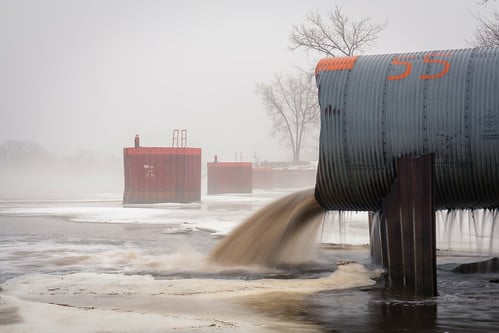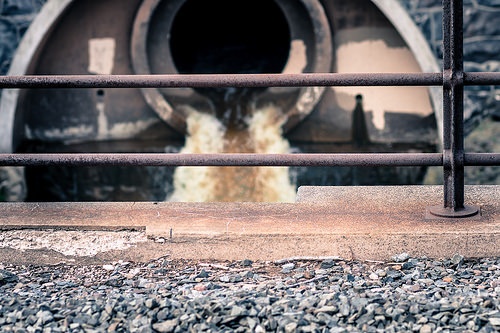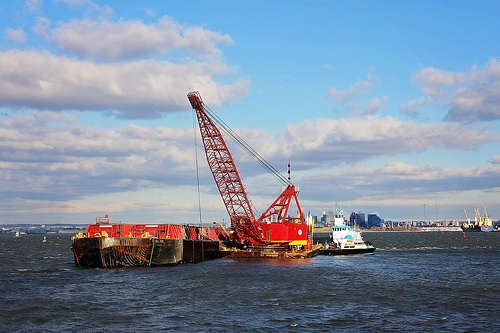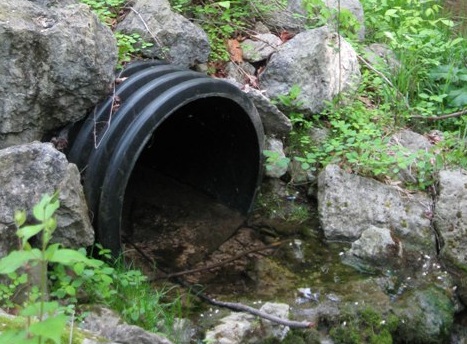The Clean Water Act (CWA) requires the Environmental Protection Agency (EPA) to define “oil” and “hazardous substances”, and includes requirements that EPA establish “procedures, methods, and equipment and other requirements for equipment to prevent discharges of oil and hazardous substances from vessels and from onshore facilities and offshore facilities, and to contain such discharges….” (33 USC § 1321(j)(1)(C)) Since 1973, EPA has required owners and operators of non-transportation-related onshore and offshore facilities to establish and implement Spill Prevention, Countermeasure and Control (SPCC) Plans if they manage more than threshold levels of oils (I summarized these requirements here).
Read MoreAudit, Compliance and Risk Blog
EPA Decides Not to Require SPCCs to Address Hazardous Substance Spills
Posted by Jon Elliott on Tue, Sep 24, 2019
Tags: Environmental risks, Environmental, EHS, EPA, Hazcom, effluent, Stormwater, clean water, spcc
Another Round of EPA and Corps of Engineers Proposals to Redefine “Waters of the United States”
Posted by Jon Elliott on Tue, Feb 26, 2019
On December 11, 2018 the Environmental Protection Agency (EPA) and the U.S. Army Corps of Engineers (Corps) jointly proposed to revise their regulatory definitions of “waters of the United States”, applying authority under the Clean Water Act (CWA). CWA does not define this term clearly, so after decades of rulemakings and litigation, it remains in dispute. Generally, Democratic presidents and the judges they appoint tend to support geographically and semantically broad applications, while with Republican presidents and the judges they appoint tend to take narrower views. The latest proposal would narrow the definition, reversing Obama-era rules adopted in June 2015, and presently in effect in 22 states based on the present status of ongoing judicial appeals (I summarized the 2015 rules, and the litigation leading up to them here and the Trump-era EPA’s 2017 proposal to roll back the 2015 revisions here). The agencies characterize this narrowing as an increase in certainty for stakeholders, accomplished by eliminating some of the site-specific discretion that the 2015 rules provided to permit writers. Because of the government shutdown, this latest proposal was not published in the Federal Register until February 14, 2019.
Read MoreTags: Environmental risks, Environmental, EPA, effluent, clean water
EPA Proposes to Rescind Last Administration’s Long-Delayed Accidental Release Prevention Revisions
Posted by Jon Elliott on Tue, Jul 17, 2018
In the last week before President Obama left office, the Environmental Protection Agency (EPA) completed a multi-year review of its Accidental Release Prevention (ARP) program for toxic catastrophe prevention, and adopted significant expansions of ARP requirements (I wrote about them here). EPA proposed ARP revisions in March 2016 (I blogged about them here). Then, when President Trump took office, EPA reversed course, repeatedly deferring the effective date of those revisions while the agency reviewed them. In May 2018 EPA completed its review, and published a proposal in the Federal Register to rescind almost all these expansions and return ARP requirement to those in place before 2017. EPA also included an alternative proposal that retained a few more elements, and requested public comment on both versions no later than July 30, 2018.
Read MoreTags: OSHA, Environmental risks, Environmental, EPA, Greenhouse Gas, ghg, Hazcom, effluent, mact
President Trump Orders Review of “Waters of the United States”
Posted by Jon Elliott on Tue, Apr 11, 2017
On February 28, President Trump issued Executive Order (EO) Number 13778, ordering the Environmental Protection Agency (EPA) and the Army Corps of Engineers (Corps) to review their current regulatory definitions of “waters of the United States” – sometimes called “navigable waters.” (I blogged about this definition here). The EO strongly points toward a narrower definition that would reduce the agencies’ jurisdiction, reversing rules issued in 2015 during President Obama’s administration.
Read MoreTags: Environmental risks, Environmental, EPA, Hazcom, effluent, clean water
Supreme Court Decides When Corps of Engineers’ Jurisdictional Determinations are “Final” and Appealable
Posted by Jon Elliott on Tue, Jul 05, 2016
Section 404 of the Clean Water Act (CWA) authorizes the U.S. Army Corps of Engineers (Corps) to regulate the “discharge” of “dredged material” or “fill material” into “navigable waters.” Section 404 provision applies if someone wants to dredge a waterway, put fill (or a constructed feature such as a pier or berm) into a waterway, or fill a wetland that occupies a waterway, if that waterway is regulated by CWA as a “water of the United States.” That definition is subject to extreme controversy at the moment – several U.S. Supreme Court decisions struck down a century of agency interpretations, which the Corps and the Environmental Protection Agency (EPA) sought to readjust by changing rules that have now been stayed pending litigation that’s certain to reach the Supreme Court again (I blogged about the rules here).
Read MoreTags: Environmental risks, Environmental, EPA, Hazcom, effluent
Mount Polley Dam Breach: KSM Mine Opponents Renew Fight
Posted by Mark Sabourin on Mon, Aug 11, 2014
Tags: Corporate Governance, Business & Legal, Employer Best Practices, Health & Safety, Environmental risks, Environmental, EHS, Hazcom, effluent, Canadian
EPA and Corps of Engineers Redefining “Waters of the United States”
Posted by Jon Elliott on Wed, Apr 09, 2014
The Clean Water Act (CWA) provides federal agencies with authority to regulate a wide range of activities that may affect “waters of the United States”—sometimes called “navigable waters.” These activities include water quality planning and discharge regulation by the US Environmental Protection Agency (EPA) and delegated states, and regulation of projects that may lead to “dredge and fill” of waters, through permits issued by the US Army Corps of Engineers.
Tags: Business & Legal, Environmental risks, Environmental, EHS, EPA, Underground Storage Tanks, effluent, Stormwater
Environmental Compliance: Hazardous Waste "Program in Place"?
Posted by Jon Elliott on Wed, Aug 29, 2012
If your business generates "hazardous" wastes, then you must manage them in compliance with applicable federal and state environmental laws and regulations. But did you know that the same regulations also require you to take steps to avoid generating such wastes in the first place? Regulations refer to these as "waste minimization" efforts.
Tags: California Legislation, Environmental risks, Environmental, EHS, EPA, Hazcom, effluent, EEOC
Numerical Stormwater Discharge Regulations—Dead in the Water?
Posted by Martin Bermudez on Tue, Jun 05, 2012
Although federal and California regulations have introduced numeric effluent limits (NELs) for stormwater discharges, technical issues and an adverse regulatory environment have stalled these efforts. Here is a summary of stormwater regulatory history, and the current regulatory atmosphere.
Tags: Environmental, EPA, effluent, Stormwater, STC









